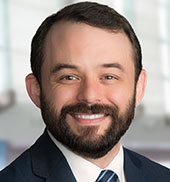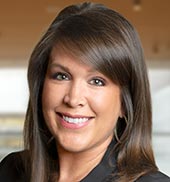Are you responsible for ensuring that your hospital financial assistance policies are compliant with IRS section 501(r) requirements? Then you will want to know that the IRS recently finalized its regulations to section 501(r), which include new requirements for 501(c)(3) organizations regarding their financial assistance policies (FAP). These regulations become effective for taxable years that begin after December 29, 2015. Until then, a hospital organization may either rely on a good faith interpretation of section 501(r) or be deemed to be in compliance with section 501(r) requirements if it complies with the provisions of the proposed or final regulations. In the meantime, hospital organizations should perform a compliance review of their current FAPs and billing and collection practices in light of these new requirements. Some particular issues to review are summarized below.
Application to related entities and emergency room operations
The IRS extended the FAP requirements to care provided in the hospital by the hospital organization’s substantially related entities (e.g., physician groups providing services at the hospital). The FAP must also list the providers (whether related or not) delivering care in the hospital facility that are covered by the hospital organization’s FAP.
The IRS specifically clarified that a third party providing care in a hospital facility’s emergency room is required to comply with the hospital’s FAP for the emergency care provided, otherwise the hospital’s operation of its emergency room will not be considered to meet the emergency room factor of the community benefit standard test set forth in Rev. Rul. 69-545. Hospital organizations should evaluate the scope of their FAPs and their contracts with emergency room providers in light of this new guidance.
Widely publicize your requirements
The IRS continues to require hospital organizations to widely publicize its FAP. The IRS clarified that including the FAP on a hospital’s website or providing a written copy upon request are minimum steps a hospital organization should take to widely publicize its FAP.
In order to sufficiently publicize its FAP, a hospital organization should also provide a plain language summary of the FAP as part of the intake/discharge process, conspicuously display the FAP in public areas (e.g., in the hospital’s emergency room and admissions areas), and include the basic information about the FAP in billing statements. In addition, hospital organizations will be required to translate their FAPs into the primary language spoken by any limited English proficiency populations who constitute the lesser of 1,000 individuals or 5% of the community served by the hospital organization. Hospital organizations should evaluate their processes and operations for publicizing and translating their FAPs and train staff on these new requirements.
Limitation on charges
Hospital organizations must limit the amounts charged for emergency or other medically necessary care provided to persons eligible for assistance under the FAP to no more than the amounts generally billed (AGB) to persons who have insurance coverage for such care. The IRS has clarified that the methodology for calculating a hospital’s AGB can periodically change, and now may include a calculation based on Medicaid rates alone, or a combination of Medicaid, Medicare and other private payor rates. A hospital organization that operates multiple hospital facilities is not required to use the same methodology for calculating AGBs across all hospital facilities. Rather, the AGB methodology can be specific to each hospital facility. This is particularly important for hospital organizations operating children’s hospitals with a high Medicaid population. Hospital organizations should evaluate the methodology for calculating AGB for each of its hospital facilities.
Extraordinary collection efforts
A hospital organization can engage in extraordinary collection activities only after it has made “reasonable efforts” to determine if an individual is eligible for assistance under its FAP. The IRS has provided new guidance regarding the meaning of “reasonable efforts.” Hospital organizations may now rely on a prior FAP-eligibility determination or make a presumptive FAP eligibility determination based upon third party information. Prior to engaging in such collection activities, hospitals must first provide individuals eligible for FAP with notice that financial assistance is available and the date after which it intends to engage in collection activities, along with a description of the activities. Hospitals should evaluate their efforts taken in connection with notifying FAP-eligible individuals that financial assistance is available as well as information provided relating to collection activities.
Note: Nothing in this post should be considered legal advice applicable to your specific hospital’s situation. You should consult an attorney for advice that applies to your circumstances.

















